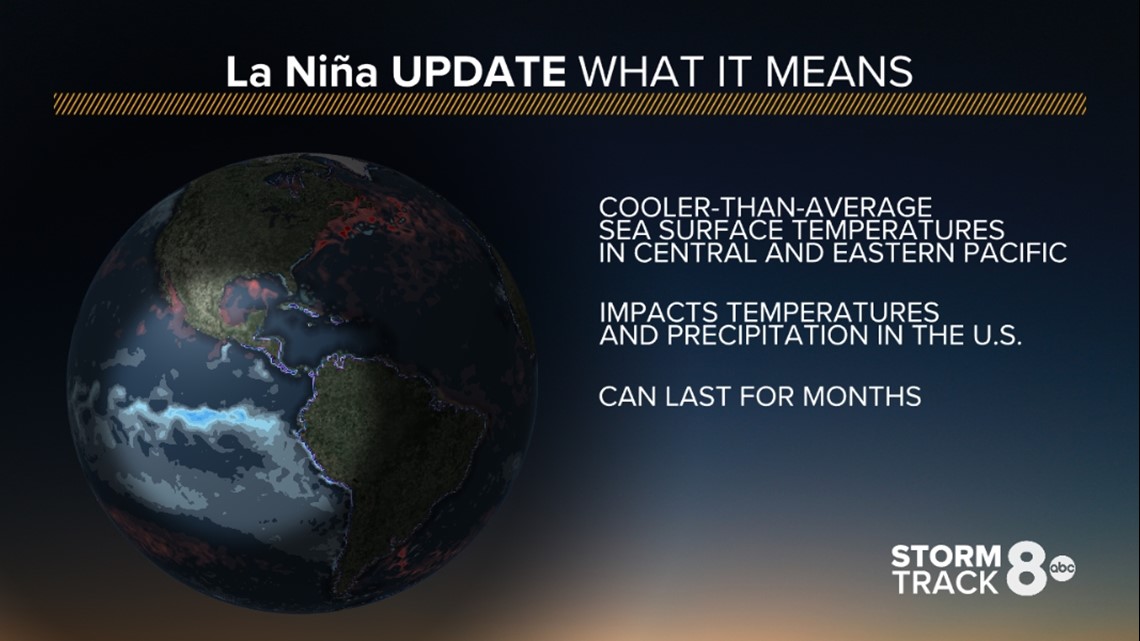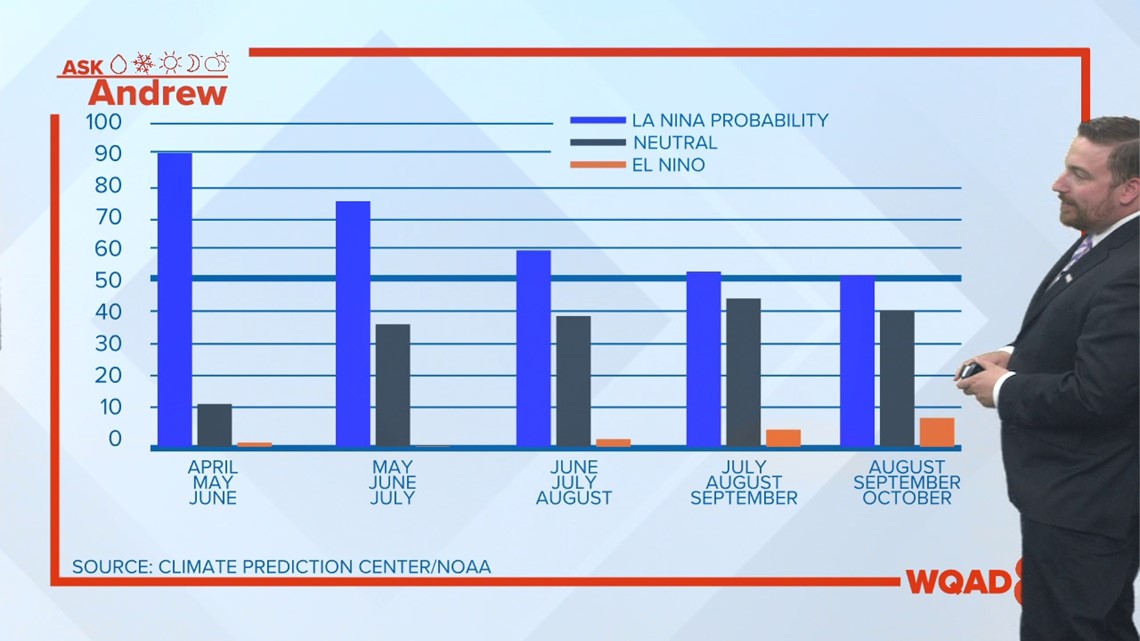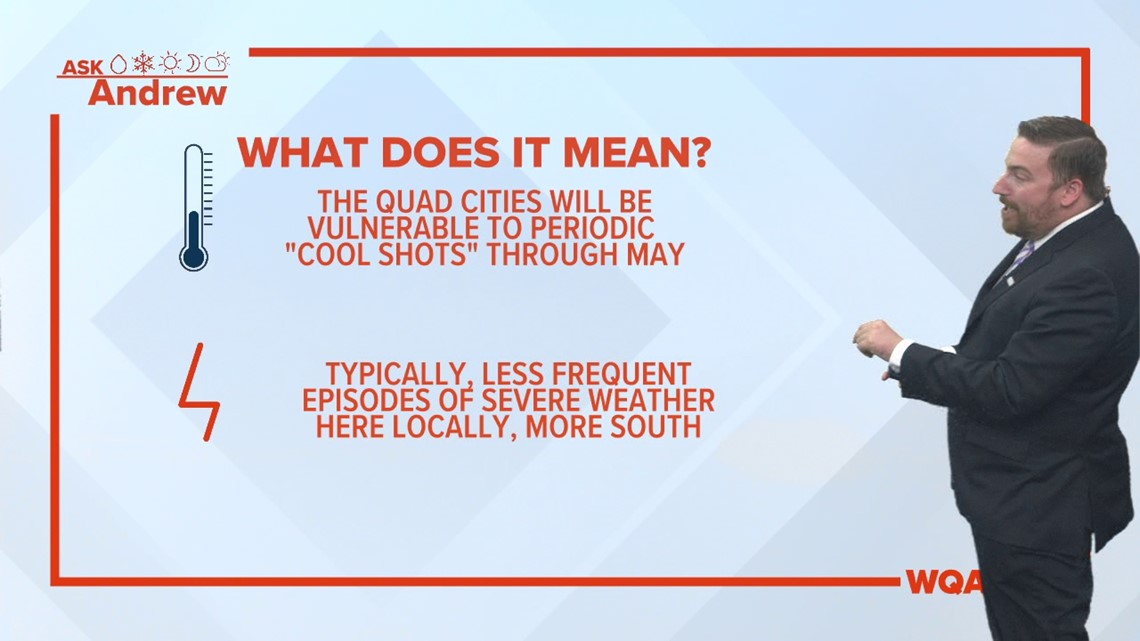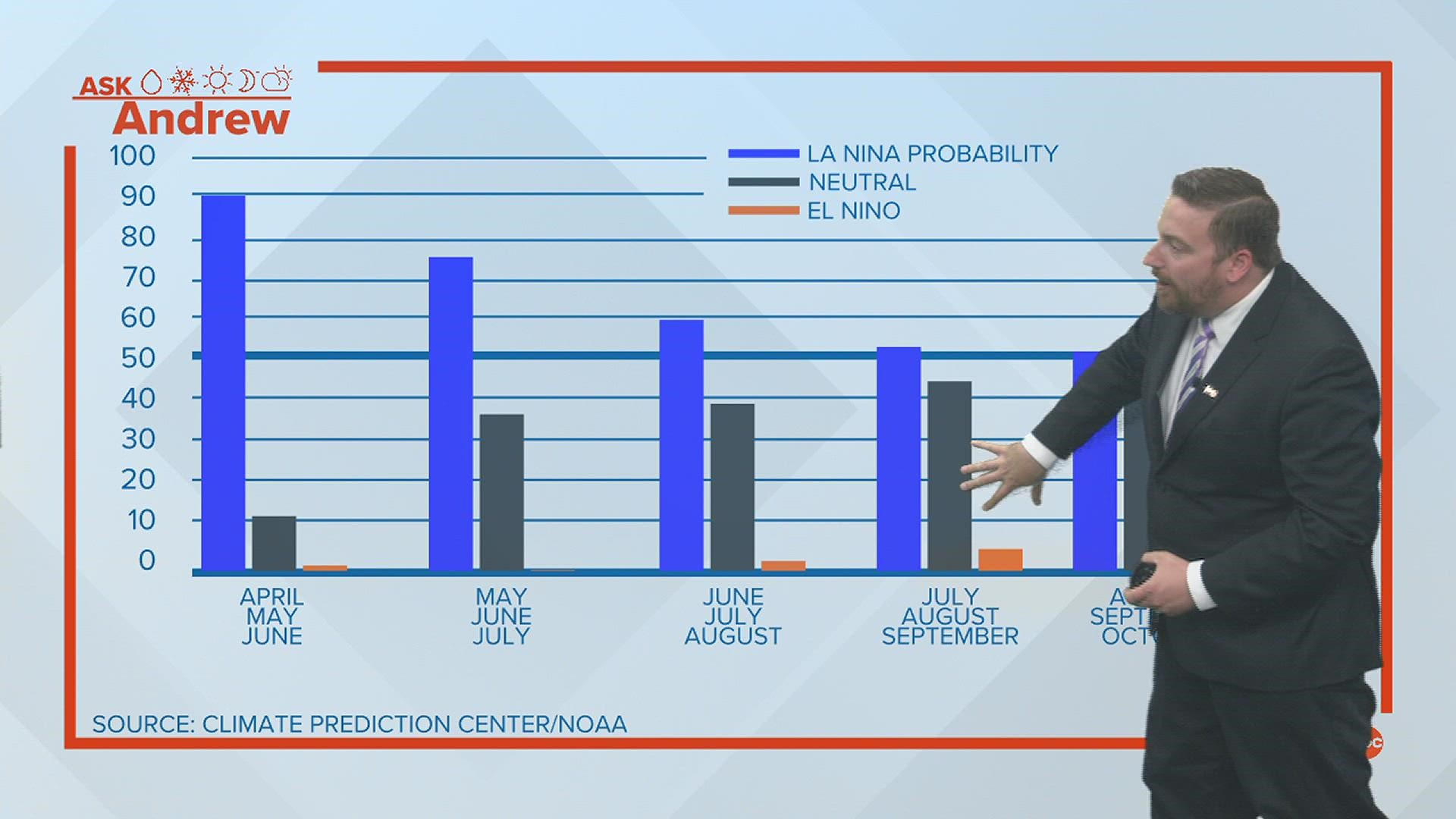MOLINE, Ill. — La Niña has had a big influence on our weather pattern lately, impacting everything from our winter snowfall totals to the cooler than normal temperature pattern. Amy in Fulton, Illinois asks what the latest update is on this type of pattern and what we can expect heading into the summer season ahead.
The latest update from NOAA, the leading agency on weather forecasting, predicts, with fairly high confidence, that La Niña conditions will continue through at least the summer months. There is more uncertainty on whether or not La Niña conditions will persist into the upcoming fall of 2022.


A quick refresher on what La Niña means. In a normal year, winds along the equator push warm water westward. During a La Niña year, these winds are much stronger than usual. That creates colder water temperatures off the coast of South America in the central and eastern Pacific oceans. Despite the scale and location of this change, it can still affect weather all over the world, including right here in the Quad Cities.


The ongoing La Niña pattern has been responsible for our lackluster snowfall this winter and bouts of colder than normal temperatures that have held tough, even through the month of April. This pattern will continue to bring cooler than normal temperatures to parts of the Midwest through at least early May. It will also shunt a more active jet stream further south, keeping an already active severe weather season going across parts of the southern United States. Does this mean the Quad Cities will see very little in the way of severe weather this spring and summer? Definitely not. It can, however, decrease somewhat the frequency of these events.


Does it also mean we'll escape the worst of the summer heat? That won't be the case, either. Summer heat is especially driven by soil conditions. Areas that are in widespread, substantial drought tend to have hotter summers, as there is less moisture available to deflect the powerful rays of the summer sun.
Have a question you would like me to answer in a future "Ask Andrew" segment? You can submit it, here!

